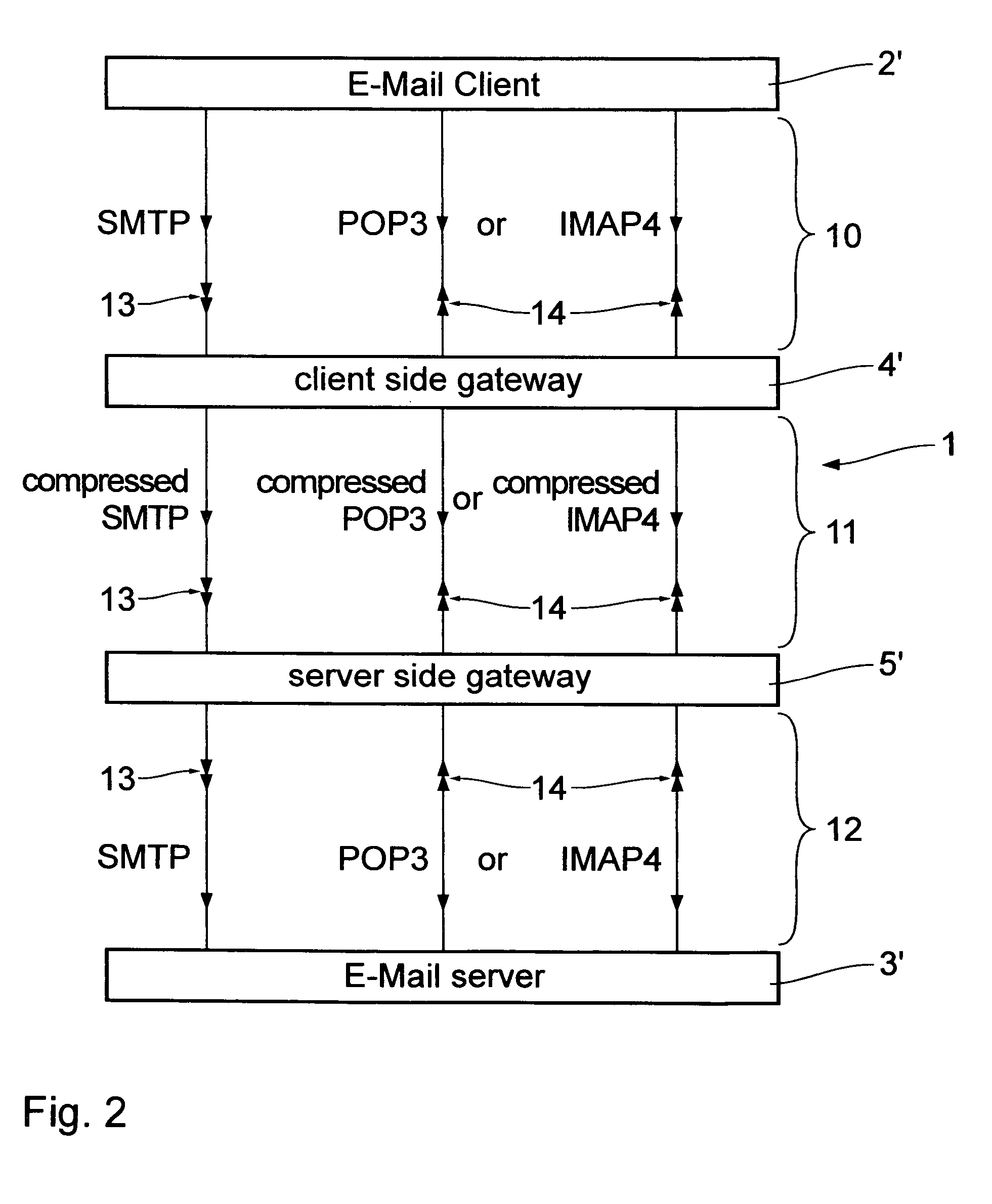Method for transmitting a message by compressed data transmission between a sender and a receiver via a data network
- Summary
- Abstract
- Description
- Claims
- Application Information
AI Technical Summary
Benefits of technology
Problems solved by technology
Method used
Image
Examples
Embodiment Construction
[0043]FIG. 1 depicts an Internet connection 1 as data network between a client 2 as sender and a server 3 as receiver. At the sending end a client side gateway 4 representing a sender side gateway is associated to said client. Equally at the receiving end a server side gateway 5 as receiver side gateway is associated to the server 3. Both gateways 4, 5 are software programs running on the client 2 and server 3, respectively. Said gateways 4, 5 might be separated from the client 2 or server 3 as concerns program organization and technique, but could also run on one computer under one operating system.
[0044] The client 2 is sending a message under the TCP / IP protocol by fractionizing the message to data records and sending said data records to the client side gateway 4 under the connection oriented protocol TCP enumerated as 6. The client side gateway 4 according to its function analyzes the data stream incoming from the client 2 and successively compresses the incoming data records ...
PUM
 Login to View More
Login to View More Abstract
Description
Claims
Application Information
 Login to View More
Login to View More - R&D
- Intellectual Property
- Life Sciences
- Materials
- Tech Scout
- Unparalleled Data Quality
- Higher Quality Content
- 60% Fewer Hallucinations
Browse by: Latest US Patents, China's latest patents, Technical Efficacy Thesaurus, Application Domain, Technology Topic, Popular Technical Reports.
© 2025 PatSnap. All rights reserved.Legal|Privacy policy|Modern Slavery Act Transparency Statement|Sitemap|About US| Contact US: help@patsnap.com



